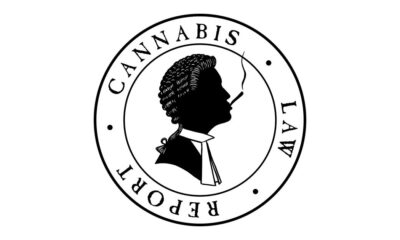Cannabis News
Strategies for Distressed Cannabis Businesses
Published
1 year agoon
By
admin
It’s pretty easy to write about everything that’s going wrong in today’s cannabis industry. Today, I want to change gears and talk about some of the strategies we’ve seen work for distressed cannabis businesses in the past. Yes, some of these strategies may seem obvious at first. But pulling them off correctly – especially in a highly regulated market – may be a challenge.
What I’m about to talk about might not work for every cannabis business and certainly not for every problem they face. And this is certainly not legal advice. The point I’m trying to make is that despite being in an over-taxed, over-regulated, industry on the edge of (if not in) a recession, there may be ways out. So without further ado, here goes:
1. Negotiating with tax authorities
Hands down, the worst problem facing cannabis businesses today is taxation. If you’re not as familiar with that issue, I suggest you delve into my recent post, “Cannabis Taxation is Theft” to see how dire the situation is. At the end of last year, cannabis businesses owed the California Department of Tax and Fee Administration (CDTFA) hundreds of millions of dollars in unpaid taxes. This number is going to keep growing until the state figures out a way to deal with it.
As the CDTFA’s unpaid tax balance balloons, we have seen the agency become increasingly aggressive. It can assess 60% penalties plus interest and other fees for late payments! It can levy assets, report cannabis businesses to the Department of Cannabis Control (DCC) to suspend licenses, and can even go after individual officers or managers of cannabis businesses in some cases. And this is just the state – the IRS has much more power and local tax agencies can be as aggressive as their state and federal counterparts.
As the CDTFA and other agencies have become more aggressive, we’ve developed a practice of negotiating payment plans for a number of clients. CDTFA typically won’t budge on waiving penalties until underlying tax principal has been paid. But that’s the state. Local jurisdictions may operate on completely different wavelengths, and may even agree to a waiver up front. It really just depends on the circumstances of the taxpayer, the tax agency, and the ways they negotiate.
2. Resolving costly disputes in court and before court
I don’t think I’ve ever seen a distressed cannabis business that wasn’t mired in at least one, usually nasty, dispute. In a lot of cases, a company hasn’t paid vendor X, and hasn’t been paid by vendor Y, so the company has to fight on both ends. Sometimes employees sue. Sometimes competitors sue. Sometimes the government files an administrative action. Sometimes they have to sue someone. You get the idea.
It almost seems too obvious to say, but it is key for distressed cannabis businesses to resolve disputes as quickly as possible and as cost-effectively as possible, while avoiding a bad settlement. Going to court, or even taking precursor actions to going to court, are not easy things for people to do. It’s costly, stressful, and has no guaranty of success. A lot of businesses are understandably hesitant to reach out to counsel “until things get too late,” and for a lot of them, things got too late weeks before they did that.
Sometimes, it may seem like an issue will never be resolved, but a simple demand letter gets the other side to pay. Or a cease and desist letter gets the other side to cut its shenanigans out. When things need to be escalated, pre-filing mediation or even early mediation can be an effective tool to avoid costly litigation. Our dispute resolution team has seen plenty of cases resolved out of court or at least early on that could easily have turned into 2-3 years in court. But sometimes that doesn’t work. Sometimes, filing and moving forward with litigation is the only way out. And sometimes a hard-fought dispute leads a business to a massive judgment and recovery of attorneys’ fees.
Again, all of this may seem obvious, because it is – conceptually at least. But navigating difficult disputes to achieve a cost-effective, reasonable outcome is incredibly complicated.
3. Other third-party remedies (both in and out of court)
Sometimes cannabis businesses have specific options that they can use in connection with a dispute or potential dispute in addition to just sending demands or litigating. Those might include:
Taking secured property. Lenders often insist on collateralizing assets as part of a loan. This is called a “security interest” and is governed by Article 9 of the Uniform Commercial Code. Sometimes, even landlords do this. If the debtor defaults and fails to cure its default, the creditor will have the right to take the secured property. Think about repossessing a car. Depending on the state and type of asset, this may require filing an action, but that’s not always the case. And depending on the terms of the security agreement, the creditor may be able to auction the asset or even keep the asset for its own use. So collateral interests can be a huge benefit to cannabis creditors.
Landlord self-help remedies. Some states allow commercial landlords to engage in self-help remedies. This includes changing locks, evicting tenants, etc. If a state (and also a lease!) allows this, it can be a powerful tool for landlords to evict non-paying tenants. But many states expressly bar self-help remedies, and landlords that engage in self-help in these states can find themselves in a worse situation than before.
Appointing a receiver. I wrote about receiverships just the other day, so I won’t belabor the point in this post. A receiver can help get a business back on track, or, if things fail, sell off business assets. This can be an immensely powerful tool for creditors.
Writs of attachment. Let’s say a cannabis business fails to pay money to a creditor. The creditor can take them to court (see point 2 above) but by the time a case is resolved, the cannabis business may be insolvent. If the creditor has good reason to believe that the debtor has assets and will get rid of them, it can file a writ of attachment and have the court “freeze” the assets of the debtor pending resolution of the action. Procedures for getting a writ of attachment vary from state to state, sometimes significantly. But once a bank account is frozen, that money’s not going anywhere and the creditor can rest easy for the duration of the suit. Moreover, once a debtor’s assets are attached, there’s a huge incentive for that debtor to start settlement talks in good faith.
These are just a few of what I think of as the “extra” remedies beyond just filing a lawsuit and waiting for the suit to make its way through the court system. Again, some of these things can be done out of court depending on the contract at issue and depending on state law. Attorneys versed in cannabis dispute resolution can guide creditors and debtors alike through prosecuting and defending against these remedies.
4. Business restructuring
When a state opens up cannabis licensing, there’s usually a mad dash to acquire as many licenses and locations as possible. Over the following years, cannabis business owners begin to realize that some aspects of their supply chain aren’t profitable or don’t make sense for other reasons. Combine this with all of the other costs of being in the industry and the dwindling cannabis economy, those businesses often have to figure out ways to restructure.
One of the most common things we’ve seen over the years is a shedding of assets. Here are some common examples:
Selling an operating subsidiary (a business sale) an operating subsidiary’s assets (an asset sale). This will allow a parent company to sell off one or more “branches” or locations and net some capital that it can use to fund other branches. The problem is this only really works for productive assets. If a company’s subsidiary has no business or very poor sales history, it’s going to be hard to find an interested buyer.
Sale-leaseback deals. In my experience, probably 90+% of all cannabis real estate deals are leases, as opposed to acquisitions, because it’s a lot easier and takes up a lot less up-front capital to lease a parcel of land. Businesses that nevertheless bought real estate and become cash-strapped often try to sell the real estate off and lease it back. Like with a business sale, it means that the seller will have a capital infusion that it can reinvest in its business.
Shedding licenses. If a location is not producing revenue, and there’s nothing else special about it, no buyer will want it. For those assets, cannabis businesses may just opt to get rid of them. I’ve seen this quite a bit over the years with distribution licenses in California. Many cannabis businesses thought a distro license would be a nice addition and help them stay vertically integrated. But for those businesses that never intended to offer distribution as a service to third parties, having a license doesn’t usually mean a whole lot. The ability to do self-transport may end up costing more in licensing, vehicle, employee, and insurance per year than simply paying someone else. So in many cases, businesses may just drop these licenses altogether.
Refinancing past-due debt. As the market for cannabis matures, we’re seeing more established lenders jump into the game. This can mean interest rates and other debt service costs that are lower than a few years ago. We’ve helped plenty of cannabis businesses refinance and secure better loan terms, whether that means lower interest, longer payment terms, or completely different loan structures. Refinancing can be an essential tool for cannabis debtors.
These kinds of restructuring opportunities can shed costly assets and gain money, or better manage mountains of debt– sometimes all at once. But cannabis businesses need to be aware that there are tons of pitfalls if this is not done the right way. For example, restructuring often requires explicit permission from regulators, secured creditors, or even landlords of the property where assets are being sold. And in my experience, these third-party approvals tend to be the hardest, longest, and most complicated parts about a business restructuring. This is especially true for cannabis landlords who, from time to time, can be the worst part of any business restructuring. Failure to consider these types of gating issues at the beginning can not only kill a deal, but it can also lead to license revocation or other penalties.
It’s hard to be a cannabis business owner in 2023. But when things get tough, it doesn’t necessarily have to mean insolvency or dissolution – if a business thinks ahead and picks remedies that make sense given its situation. As 2023 continues to unfold and we continue to see the distressed market under pressure, we’ll be sure to keep writing about all of these topics. So stay tuned to the Canna Law Blog.
You may like
Cannabis News
America’s Constitutional Conundrum: Guns and Ganja
Published
2 days agoon
January 21, 2025By
admin

Of Guns and Ganja: America’s Constitutional Conundrum
If there’s one thing America is famous for, it’s guns – and lots of ’em! In the land of the free and home of the brave, firearms aren’t just a right, they’re practically a national pastime. With over 400 million firearms floating around a nation of 330 million people, it’s safe to say that guns are as American as apple pie and baseball.
But you know what else Americans love? Drugs. The US remains the world’s largest drug market, with an particularly passionate affair with cannabis. Mary Jane has come a long way since the “Just Say No” propaganda of the D.A.R.E. days. Now, millions of Americans legally light up in their home states, transforming from “criminals” to “consumers” faster than you can say “tax revenue.”
Here’s where things get sticky though. Despite the Biden administration’s vague promises of reform, cannabis remains stubbornly classified as a Schedule I substance at the federal level. This creates a peculiar predicament for freedom-loving Americans who appreciate both their Second Amendment rights and their evening toke.
You see, there’s this obscure interpretation of federal law that says if you consume cannabis – even legally in your state – you’re technically not allowed to own firearms. Let that sink in for a moment: in a country with more guns than people, where cannabis is legally sold in most states, you’re forced to choose between your constitutional right to bear arms and your state-sanctioned right to consume a plant.
As you might imagine, telling Americans they can’t have their guns AND their ganja isn’t exactly going over well. It’s a uniquely American saga that pits state rights against federal law, personal freedom against bureaucratic overreach, and common sense against, well… whatever you’d call this situation.
Let’s dive into this bizarre legal battleground where constitutional rights and cannabis collide.
As America’s cannabis landscape evolves, we’re witnessing a fascinating legal tug-of-war between state sovereignty and federal authority. The latest battleground? The constitutional rights of cannabis consumers to bear arms.
In a groundbreaking decision, the U.S. Court of Appeals for the Fifth Circuit recently reaffirmed that banning occasional marijuana users from owning firearms is unconstitutional. The case, known as U.S. v. Daniels, centers around a man who was sentenced to four years in prison after police found trace amounts of cannabis and firearms during a routine traffic stop. Talk about wrong place, wrong time!
The federal government, particularly under the Biden administration, has been performing some impressive mental gymnastics to justify their position. Their argument? Cannabis users with guns “endanger public safety,” “pose a greater risk of suicide,” and are more likely to commit crimes “to fund their drug habit.” They’ve even argued that cannabis consumers are “unlikely to store their weapons properly.” I guess they never met my ex-military uncle who meticulously organizes his gun safe while enjoying his evening edible.
But here’s where it gets really interesting. The Department of Justice claims the restriction is perfectly constitutional because it aligns with the nation’s history of disarming “dangerous” individuals. They’re essentially putting cannabis users in the same category as folks with domestic violence restraining orders. As someone who’s spent considerable time around both cannabis users and domestic abusers (professionally, of course), I can tell you there’s a slight difference in temperament.
The courts, however, aren’t buying it. As the Fifth Circuit pointed out, the government failed to prove that Daniels was “presently or even regularly intoxicated at the time of arrest.” They noted that even if the government had proven frequent intoxication, they offered “no Founding-era law or practice of disarming ordinary citizens ‘even if their intoxication was routine.'”
The ruling doesn’t completely invalidate the federal statute (known as § 922(g)(3)), but it does expose its shaky constitutional foundation. As the court stated, “This is not a windfall for defendants charged under § 922(g)(3),” but rather a recognition that the government’s enforcement approach is fundamentally flawed.
Meanwhile, the National Rifle Association (NRA) – not exactly known for their progressive stance on substances – acknowledges the absurdity of the situation. They point out that “marijuana use is no longer limited to the domain of indigenous religious customs or youth-oriented counterculture and now includes a wide variety of people who use it for medicinal or recreational reasons.” When even the NRA is suggesting your gun control measure might be a bit extreme, you know something’s amiss.
The result of all this legal wrangling? A patchwork of confusion where state-legal cannabis users must choose between their Second Amendment rights and their medicine or recreational preference. It’s a prime example of how federal prohibition creates more problems than it solves, forcing otherwise law-abiding citizens to become unwitting criminals simply for exercising multiple legal rights simultaneously.
Welcome to America, folks, where you can have your guns or your ganja, but apparently not both – at least until the courts finish sorting out this constitutional cannabis conundrum.
Let me be blunt – we’re caught in a classic American political pretzel. The Biden administration dangles the carrot of rescheduling cannabis to Schedule III, making vague promises that sound good on the campaign trail but do little to address the fundamental issues plaguing cannabis consumers, including their right to bear arms.
While some celebrate these baby steps toward reform, I’ve been around this block enough times to know that rescheduling is like putting a Band-Aid on a bullet wound. It might stop some bleeding, but it doesn’t address the underlying trauma. The gun rights issue is just one of many complications that arise from cannabis’s continued inclusion in the Controlled Substances Act (CSA).
Here’s the uncomfortable truth: there’s only one real solution, and it runs straight through the halls of Congress. The same body that created this mess with the CSA in 1971 is the only one with the power to truly fix it. Congress needs to completely remove cannabis from the CSA – not reschedule it, not modify its status, but fully deschedule it.
Think about it. Rescheduling to Schedule III would still leave cannabis in a weird legal limbo. Sure, it might make research easier and give Big Pharma more room to play, but what about the millions of Americans who use cannabis medicinally or recreationally in their state-legal markets? They’d still be federal criminals, still banned from purchasing firearms, still caught in the crossfire between state and federal law.
The only path forward is complete removal from the CSA, coupled with a federal framework that respects state markets while establishing basic national standards. This would resolve the gun rights issue overnight – no more choosing between your Second Amendment rights and your medicine or recreational preference.
Would I love to see Congress completely overhaul the CSA? Absolutely. The entire scheduling system is based on outdated science and political theater rather than actual harm reduction principles. But let’s be realistic – that’s about as likely as finding bipartisan agreement on… well, anything these days.
Instead, we need to focus on what’s achievable: complete cannabis descheduling. This isn’t just about guns and ganja – it’s about fixing a broken system that’s created countless legal paradoxes and unnecessary criminal penalties. It’s about acknowledging that the emperor has no clothes, that cannabis prohibition has failed, and that it’s time to move forward with a sensible federal policy.
Until Congress acts, we’ll continue to see these legal battles play out in courts across the country, watching judges try to reconcile constitutional rights with outdated federal drug laws. It’s a waste of judicial resources, taxpayer money, and most importantly, it’s a waste of Americans’ time and freedom.
The solution is clear. The only question is: how many more Americans need to get caught in this legal crossfire before Congress finally does its job?
Inspiration:
https://www.marijuanamoment.net/federal-court-reaffirms-that-ban-
on-gun-ownership-for-people-who-occasionally-use-marijuana-is-unconstitutional/
https://www.marijuanamoment.net/nra-says-federal-ban-on-
marijuana-amid-state-level-legalization-has-created-confusing-legal-landscape-for-gun-owners/
CANNABIS AND GUN RIGHTS, READ ON…
Cannabis News
MLK Day 2025: Cannabis and Civil Rights
Published
3 days agoon
January 20, 2025By
admin
It’s MLK Day once again.
I’ve been writing an MLK Day post on this blog for eight consecutive years. The theme of my posts is that cannabis is a civil rights issue, and that Dr. King would have advocated for ending prohibition based on that fact.
Each year, I have demonstrated with facts (upon facts upon facts) that the War on Drugs continues in insidious ways. In, 2023, which is the most recent year that FBI data is available, law enforcement officials made over 200,000 arrests for marijuana-related convictions. Those 200,000 arrests constitute roughly 25% of all drug-related arrests.
Sadly, arrests of black people constituted 29% of all drug arrests in 2023, although only 13.6% of Americans are black.
Heading into MLK Day weekend, President Biden announced that he is commuting the sentences of nearly 2,500 people convicted of non-violent drug offenses. The focus was predominantly on individuals “who received lengthy sentences based on discredited distinctions between crack and powder cocaine…”, as opposed to cannabis-related crimes. According to the Last Prisoner Project, “the total number of those incarcerated for cannabis who received commutations is not knows, but nine LPP constituents will be free.”
For all that Biden promised as to cannabis, it’s the least we could have asked. Under the new Trump administration, attention will quickly return to the frustrating marijuana rescheduling process. If cannabis ends up on Schedule III, criminal penalties for traffickers may soften, but make no mistake: possessing and distributing cannabis will still be a federal crime.
At the state level, where most arrest occur, progress has slowed in the last few years. Out here where I live in Oregon, with our 800 cannabis stores, it’s astonishing to think of 200,000 annual cannabis arrests– most for simple possession, no less.
There is a lot of work to do. Here are a short list of organizations if you’d like to get involved:
For prior posts in this series:
Cannabis News
No Smoking, No Vaping – What’s the Safest Way to Consume Cannabis Based on Your Genetics and Science?
Published
3 days agoon
January 20, 2025By
admin

The Safest Way To Consume Cannabis For Health, According To Science and Genetics
Marijuana legalization continues to help thousands of people.
Most especially those who need marijuana to treat conditions in a safer, more natural, and more cost-effective manner compared to pricey, addictive, and dangerous pharmaceutical medications. That said, not all weed is made the same: depending on where you get your weed, some of it may be grown using pesticides, which can be bad for your health especially when smoked. So yes, it does matter what kind of weed you’re smoking and where you got it from.
In addition, not all methods of consumption are also the same. Many consumers, particularly extremely health-conscious individuals, prefer not to smoke weed. Smoking weed that’s been grown with pesticides can also be dangerous for one’s health. It’s especially not recommended if you are immunocompromised,
That’s why a growing number of consumers prefer to explore the variety of other consumption methods available these days, such as edibles, tinctures, beverages, and cannabis oil to name a few.
Now, the results of a new study have just been published, suggesting that cannabis oil extracts may be the safest way to consume weed. Researchers studied MCT oils that contained high concentrations of CBD with some THC.
“Several studies have found damage to various chromosomal associated with cannabinoid use,” said the researchers. “Considering numerous studies demonstrating the genotoxicity of cannabis, it is noteworthy that many of these investigations have focused on individuals who consume cannabis through smoking or in cigarette form, normally rich in THC,” they said.
The researchers specifically found that extracts of cannabis sativa don’t exhibit genotoxic or mutagenic potential in doses that are commonly used by patients to manage anxiety, pain, epilepsy, and other conditions. “Although the current literature on cannabis sativa extract remains inconsistent, most evidence suggests that these extracts are safe for cells and DNA under both acute and chronic experimental conditions, even at high doses, in studies involving both male and female animals,” wrote the researchers.
Some consumers were alarmed recently when studies, albeit weak in nature, were published, which suggested that cannabis smoke had the potential to be genotoxic. That said, it still isn’t recommended for individuals who may be immunocompromised but there is no strong evidence that cannabis can indeed cause genetic mutations.
Since oral consumption of cannabis oil bypasses the respiratory system and allows patients a more accurate way to dose, it’s become the preferred method of consumption for many medical cannabis patients. Whether you’re young or old, the safety profile of cannabis oil has been proven; this is especially true if you wish to avoid respiratory harm.
The Role Of Quality Cannabis In Health
As cannabis consumers, there are many ways you can ensure that you’re medicating with clean, safe cannabis that’s free from dangerous contaminants. Pesticides aren’t the only contaminants to be aware of; street cannabis sold by dealers can be laced with toxic additives and even fatal ingredients, such as in the notorious case of the tainted THC vapes containing Vitamin E acetate. Other undesirable ingredients to take note of include residual solvents and heavy metals.
It’s also your role as a consumer to do research about the quality of cannabis you buy. Of course, it makes sense to only buy from licensed cannabis dispensaries since they can easily supply laboratory-tested cannabis products. From edibles to oils, flowers and more, licensed dispensaries can provide products that have a Certificate of Analysis or COA, which can either be printed on the packaging itself, accessed online, or via a QR code. A cannabis product with a COA can give you peace of mind that the product meets stringent testing and quality standards.
In addition, you can also seek out certified organic cannabis products. Of course, the fact that cannabis still isn’t federally legal means that there is nothing similar to a USDA Organic certification for weed, though some manufacturers make it easier for consumers these days to know if they are buying organic or not. For example, if you live in California, you can look for Clean Green Certified or OCal (weed that has been grown in standard that are comparable to organic).
Conclusion
If you are older or have pre-existing medical conditions, the best way to medicate with marijuana is by taking cannabis oil orally. It’s also extremely versatile, since it can be used to treat an array of conditions ranging from nausea to chronic pain, headaches, muscle pain, and so much more. While it may have reduced bioavailability compared to smoking, cannabis oil extracts do provide fairly quick relief for several conditions.
Smoking weed in any form, whether by flower, vape oil, or concentrates, should be avoided or limited altogether. There are also other potential consumption methods that are safer and more suitable for the immunocompromised, such as sprays, edibles, and topicals.
It also helps to carefully consider the type of cannabinoids you are consuming. For patients that need to medicate during the daytime, CBD or high-CBD products are always preferred. One must be careful with THC especially if you are older, operate machinery, or have no previous experience with psychoactive drugs. Always start with the lowest dose possible, and work your way to a higher dose slowly.
SAFEST WAY TO USE WEED, READ ON…

Leafly Buzz: 12 hottest weed strains to smoke in 2025

Can Medical Cannabis Help Support Immune Health?

TikTok’s Double Standard on Marijuana And Alcohol

President Trump will decide marijuana rescheduling, federal reform

Are These the Top Cannabis Dispensaries In New York?

Panama And Cannabis

LA’s cannabis community steps up for wildfire relief

Does Your Dog Really Care When You Are Sad

Fun Life Lessons Learned From Spaghetti Westerns

America’s Constitutional Conundrum: Guns and Ganja

Distressed Cannabis Business Takeaways – Canna Law Blog™

United States: Alex Malyshev And Melinda Fellner Discuss The Intersection Of Tax And Cannabis In New Video Series – Part VI: Licensing (Video)

What you Need to Know

Drug Testing for Marijuana – The Joint Blog

NCIA Write About Their Equity Scholarship Program

It has been a wild news week – here’s how CBD and weed can help you relax

Cannabis, alcohol firm SNDL loses CA$372.4 million in 2022

A new April 20 cannabis contest includes a $40,000 purse

Your Go-To Source for Cannabis Logos and Designs

UArizona launches online cannabis compliance online course
Trending
-

 Cannabis News2 years ago
Cannabis News2 years agoDistressed Cannabis Business Takeaways – Canna Law Blog™
-

 One-Hit Wonders2 years ago
One-Hit Wonders2 years agoUnited States: Alex Malyshev And Melinda Fellner Discuss The Intersection Of Tax And Cannabis In New Video Series – Part VI: Licensing (Video)
-

 Cannabis 1012 years ago
Cannabis 1012 years agoWhat you Need to Know
-

 drug testing1 year ago
drug testing1 year agoDrug Testing for Marijuana – The Joint Blog
-

 Education2 years ago
Education2 years agoNCIA Write About Their Equity Scholarship Program
-

 Cannabis2 years ago
Cannabis2 years agoIt has been a wild news week – here’s how CBD and weed can help you relax
-

 Marijuana Business Daily2 years ago
Marijuana Business Daily2 years agoCannabis, alcohol firm SNDL loses CA$372.4 million in 2022
-

 California2 years ago
California2 years agoA new April 20 cannabis contest includes a $40,000 purse











